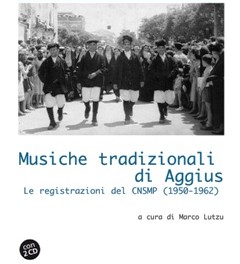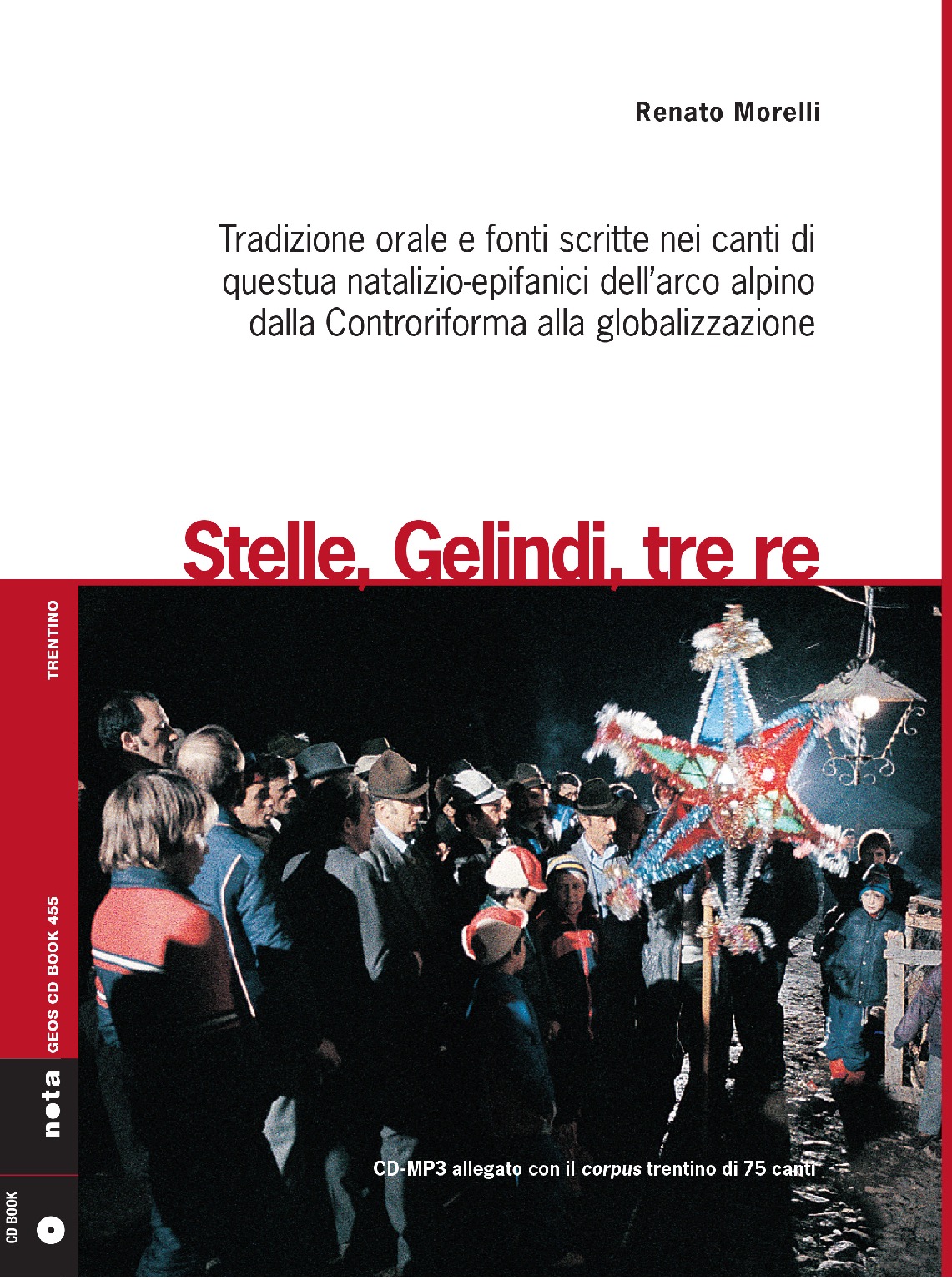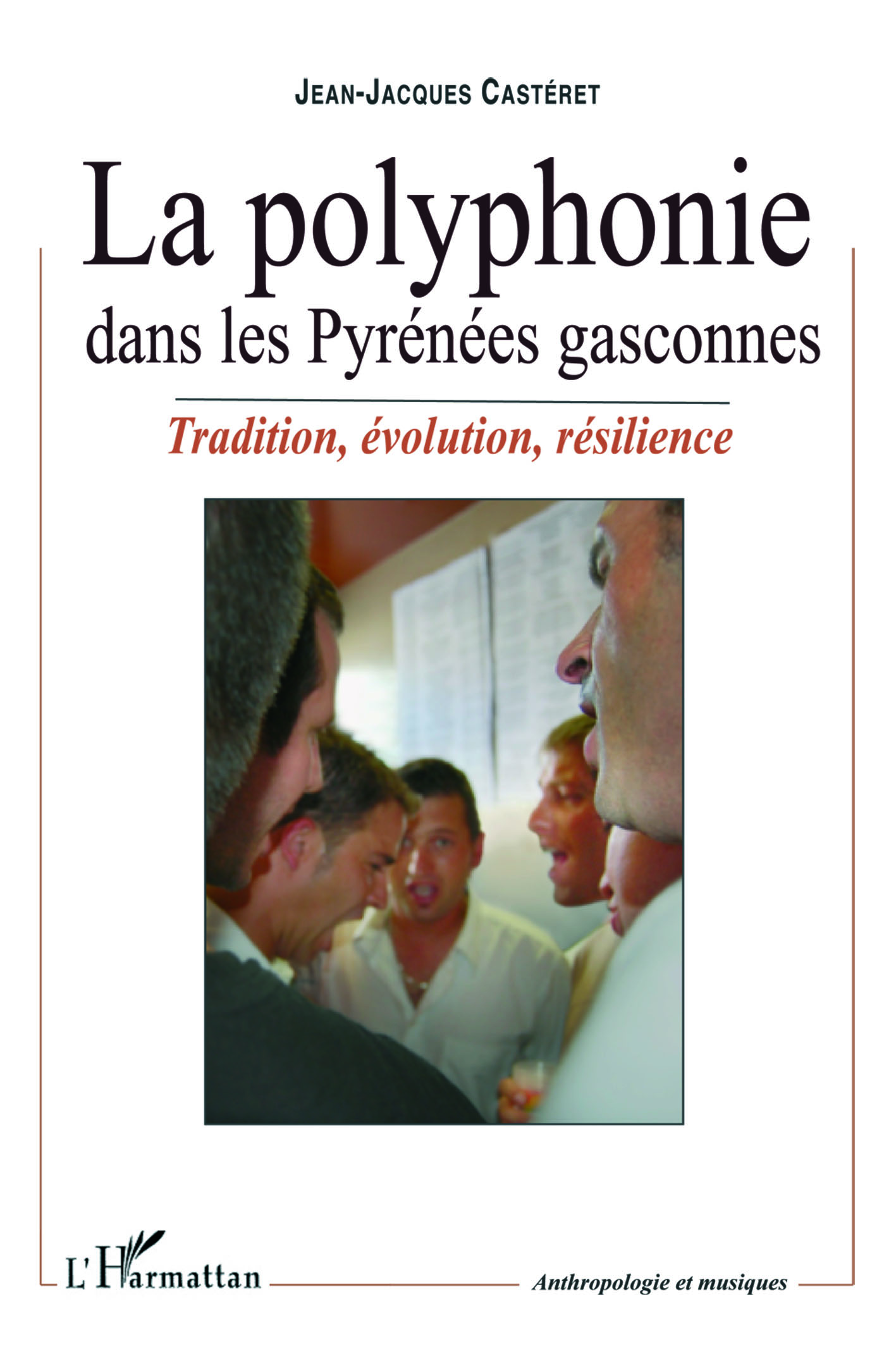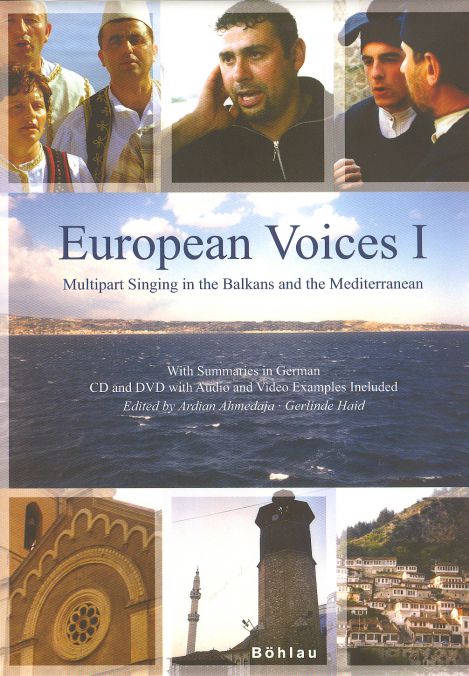-
Marco Lutzu, Musiche tradizionali di Aggius: Le registrazioni del CNSMP (1950-1962)
[Traditional musics from Aggius: The recordings of CNSMP (1950-1962)]
Roma, Squilibri, Archives of Ethnomusicology, 2015, 176 p. (with 2 CDs)
ISBN 978-88-89009-76-5


Alphorn-playing as “blown yodeling“?

Raymond Ammann, Yannick Wey, Andrea Kammermann
Alpine Vibes
The Musical Connection between the Alphorn and Yodeling – Fact or Ideology?
Translated by Gary Martin
Broschur
- 224 Seiten, 85 Abbildungen s/w.
ISBN 978-3-0340-1743-5
CHF 38.00 / EUR 38.00
Open Access
Website: https://www.chronos-verlag.ch/node/28647
Direct link to the PDF: https://www.chronos-verlag.ch/public-download/3958
DOI: https://doi.org/10.33057/chronos.1743
Summary
Alphorn playing and yodeling are an integral part of traditional cultural events in Switzerland. Questions about musical contexts inevitably arise. Is alphorn-playing to be understood as “blown yodeling”? Did the natural tone series of the alphorn influence yodeling? Are both rooted in the centuries-old Kuhreihen, the songs herdsmen used to lure the cows for milking?
The team of authors explores possible links between yodeling and alphorn music and analyzes evidence pointing to a common origin of the two musical practices. The study area originates from Switzerland and extends over the south of Germany and Austria. Music-aesthetic connections are discussed, historical and current arguments weighed. In the Austrian Wurzhorner yodels, the name already indicates a connection to the instrument, and in the Muotatal “Bücheljuuz”, the yodel imitates the sound of the instrument so skillfully that the difference between voice and instrument is hardly noticed.
However, not all types of yodeling have a musical relationship to the alphorn, and alphorn music is not always connected with yodeling. The study shows that there has been a tangible, albeit unsteady, musical interrelationship between alphorn and yodel for around 200 years.
Renato Morelli, Stelle Gelindi tre Re.
Tradizione orale e fonti scritte nei canti di questua natalizio-epifanici dell’arco alpino dalla Controriforma alla globalizzazione
Udine, Nota, eos CD and book 455, 2014, 320 p. (with 1 CD)
ISBN 9788861631274

This CDbook presents the results of the author’s field research of over thirty years, combined with research at the Vallicelliana library in Rome, the British Library in London, the library of the Bologna Conservatory, and the Ferdinandeum in Innsbruck. The publication has allowed new light to be shed on the central problem facing ethnomusicologists concerned with the Italian Alps, namely the origin of written sources of devotional music. This “cross-over” repertoire between written and oral traditions, the sacred and the profane, popular and learned culture, has largely been spread by oral tradition. Through specific research, it has been possible to identify not only the printed sources, but also the role of priests in the widespread diffusion of this repertoire.
With its roots in the Counter-Reformation with the Council of Trent and the various lodi a travestimento spiritual, popular melodies and songs which have been given new lyrics with religious significance, this tradition continued with the work of the Jesuits, Franciscans, and individual priests. This book presents in detail the work of Saint Carlo Borromeo (1538-1584) and the Dominican priest Father Serafino Razzi (1531-1613) during the Council of Trent (1545-1563). They directed, for six years, a commission of priests-musicians to prepare the lodi a travestimento spirituale. This work aimed to counter the spiritual songs in the vernacular of Luther and Calvin.
The custom of the Stella is linked instead to the Jesuits as a means of reinforcing the significance of the Epiphany (the visit of the Magi), as challenged by Luther.
This research, after sifting through the folds of ‘micro-history’ to arrive at the broader history of the Lutheran reform and subsequent Council of Trent with its laudi a travestimento spirituali, has shed new light on the origin and sources of a tradition which has spread throughout the Alpine region.
Roberto Leydi wrote:
“This research by Renato Morelli can be placed in a particularly advanced position in the Italian ethnographic panorama […] The research on lauda and songs is an important contribution to the knowledge of the Council of Trent which has been thoroughly studied, analysed and celebrated for its other areas including ‘higher level music’, but had been somewhat lacking in consideration of its impact on popular music.“
The first part of the book is philological and historical-ethnographic, and examines the four principal printed sources found from the sixteenth through the eighteenth century.
The second part is dedicated to the ethnomusicological analysis of twenty-two songs published on these sources, including seventy-five variants from the Trento region.
The CD included with the book contains the complete corpus of the seventy-five variants from the Trento region as recorded by the author.
In Aggius, between January 1950 and March 1962, the CNSMP (National Centre for the Study of Folk Music) organized five campaigns that, coordinated by Giorgio Nataletti or Diego Carpitella, took advantage of the collaboration of scholars already working in Sardinia such as Alberto Mario Cirese, Antonio Santoni Rugiu, Antonio Sanna, Paolo Cherchi and Pietro Sassu.
The attention paid to this small village sited in Gallura, in northern Sardinia, was determined by the originality and the richness of the repertoires now largely reproduced on the two enclosed CDs: a huge variety of expressive forms such as lullabies, work songs, serenades, accordion dances and the most representative genre, the cantu a tasgia, the multipart singing which is still considered today as the key element of their cultural identity by the local singers.
The volume opens with an in-depth introduction and contains the transcription and the Italian translation of the lyrics, some articles about the history of cantu a tasgia in the last century (i.e. the appreciation by Gabriele D’Annunzio and its presence in the play Ci ragiono e canto directed by Dario Fo), highlighting the central role played by two of the most important singers, Salvatore Stangoni and Matteo Peru.
The volume is an essential tool for the knowledge of the musical practices of this small village and, at the same time, a significant example of how a multipart music can change over time both from the formal and expressive point of view and from the meanings and values people express through it in an ever changing social context.
The book has been published thanks to the contribution of the choir “Galletto di Gallura” from Aggius, as a way to honour its forefathers. Moreover, this book opens a specific section of the aEM book series published by Squilibri, dedicated exclusively to the Sardinian documents preserved in the Archives of Ethnomusicology of the ‘Santa Cecilia National Academy’, and overseen by an editorial board chaired by Ignazio Macchiarella.
- European Voices I. Multipart Singing in the Balkans and the Mediterranean.
- Edited by Ardian Ahmedaja & Gerlinde Haid
- Wien. Böhlau. 2008.(With Summaries in German).
- CD and DVD with Audio and Video Examples Included.
The Institut für Volksmusikforschung und Ethnomusikologie (IVE) and the Böhlau Verlag are pleased to present Volume 22 of their series “Schriften zur Volksmusik” with the res- ults of long-standing cooperation among specialists of multipart music in southern Europe. In this volume, the latest results of researchers with extensive fieldwork experience are presented in word, sound and pictures. In addition, singing styles which were previously unknown in the scholarly literature, such as those of Spain and the French mainland, are examined for the first time. The inclusion of the Balkans was a decisive factor, also in or- der to perceive the musical cultures of this area as definitely belonging to the European cul- tural tradition, which is still not taken for granted.
- Introduction
- Salwa El-Shawan Castelo-Branco:
The Politics and Aesthetics of Two-Part Singing in Southern Portugal - Jaume Ayats and Sílvia Martínez:
Singing in Processions and Festivities: A Look at Different Models
of Multipart Singing in Spain - Jean-Jacques Castéret:
Mainland France Multipart Singing: Of Men and Patterns - Mauro Balma, Liguria:
A Multipart Song from the Alps to the Sea - Giorgio Adamo:
Social Roles, Group Dynamics and Sound Structure in Multipart Vocal Performance:
The Female Repertoire for Good Friday at Cassano allo Ionio (South Italy) - Ignazio Macchiarella - Harmonizing in the Islands:
Overview of the Multipart Singing by Chording in Sardinia, Corsica, and Sicily - Joško Ćaleta:
Modern Klapa Movement- Multipart Singing as a Popular Tradition - Sofija Bajrektarević:
About Multipart Singing in Bosnia and Herzegovina - Lozanka Peycheva:
Multipart Songs and Transformation: A Bulgarian Case - Ardian Ahmedaja:
Changes within Tradition: Parts and their Number in Multipart Songs among Albanians - Thede Kahl:
Multipart singing among the Aromanians (Vlachs) - Rudolf Brandl:
New Considerations of Diaphony in Southeast Europe - Rudolf Brandl:
Neue Überlegungen zur Diaphonie in Südosteuropa
Jean-Jacques Castèret, Multipart singing in Gascon Pyrenees: Tradition, evolution, resilience.
Paris, L’Harmattan, Anthopologies et musique, 2012, 367 p.
ISBN : 978-2-336-00821-9, 37,50 €

In Pyrenean Gascony, multipart singing is something general for both Sunday masses, patronal festivities or festive gathering. It is, however, long remained in the blind spot of ethnomusicological research as cultural action.
After fifteen years of research, this book invites to discover a social practice that draws a very classical and post-modern field.
From pub to pub, feast to festival, closer to the singers, this research focuses on understanding the musical and human springs of multipart singing, the meaning of this work in progress that say by turns the Pyrenean communities mood, individual and collective aspiration to a form of absolute.
The author explores beyond the history of this very resilient practice: the process of transmission in the last fifty years in the context of mutation of the traditional society. The contemporary history of a generational shift. A centuries-old history crossing in the nineteenth century the construction of the rom
Between musicology and ethnomusicology, anthropology and history, Jean-Jacques Castéret revisits in this book the notions of oral and written, profane and religious, popular and scholarly, revealing the Pyrenean part of a very extensive European archipelago where church faux-bourdon, fallen into history oblivion, and secular multipart singing are combined for more than five centuries.antic Pyrenean imaginary and the emergence of early mechanisms of patrimonialization.
Dr. Jean-Jacques Castéret is ethnomusicologist, PhD. of the Université Bordeaux 3 – Lacito du C.N.R.S. Head of the Culture & Society pole of the Institut Occitan d’Aquitaine, he develops public programs of sound archives valorization (www.sondaqui.com) and safeguarding of Intangible Cultural Heritage.
Associate researcher of the Laboratoire ITEM de l’Université de Pau et des Pays de l’Adour, member of the Research Centre for European Multipart music (Universität für Musik und darstellende Kunst Wien), of the multipart group of the International Council for Traditional Music, of the Société Française d’Ethnomusicologie and administrator of the CIRIEF.


